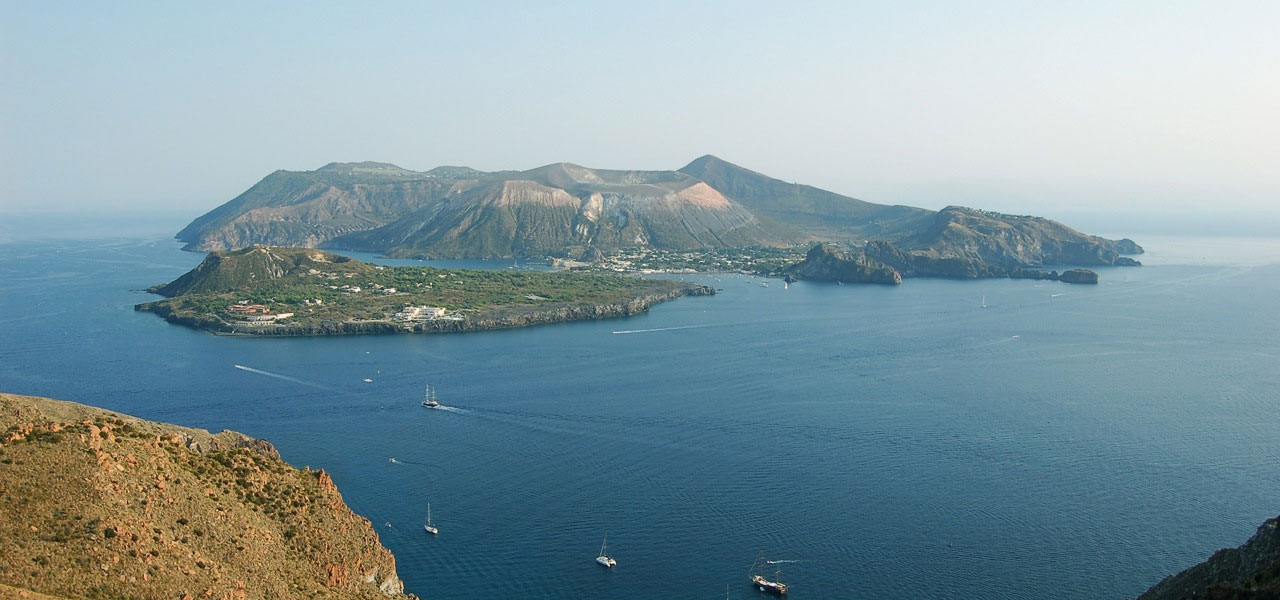Vulcano

The Island of Vulcano lies in the area of the Aeolian Islands; it extends about 21 square km and is administered by the municipality of Lipari. The population was 715 inhabitants in 2001 and are called volcanari. In ancient times the island was called Therasia, then Hiera, because sacred to the god Vulcan; from here, finally, its current name. Greek mythology on this island placed the Forges of Hephaestus, god of fire and blacksmith who had the Cyclops as helpers.
But it’s the name that the Romans gave to the god, Vulcan, that was given to the island. And that’s where the terms volcano and volcanism come from. The island owes its existence to the fusion of some volcanoes of which the largest, inactive, is the Fossa Volcano. The others are the Vulcanello (123 m) to the north; the completely inactive southern Monte Aria (500 m), which forms a vast plateau consisting of lava, tuff and holocene alluvial deposits and Monte Saraceno (481 m). The main volcano in the west seems to have been formed after the extinction of the southern volcano; with very acidic lavas, it generated the mountain called Vulcano della Fossa (or Gran Cratere or Cono di Vulcano), 386 m high, with very steep slopes, with an extinct crater to the north, called Forgia Vecchia. To the north-west there is a recent flow of obsidian from 1771, called the Pietre Cotte.
The active crater is located somewhat to the northwest
Although the last eruption took place in 1888 – 1890, the volcano has never ceased to give evidence of its vitality and even today there are different phenomena: fumaroles, jets of steam both on the ridge and submarines and the presence of sulphurous sludge from the appreciated therapeutical properties. To the north numerous fumaroles continue to emit boric acid, ammonium chloride, sulfur, which feed an industrial complex for the production of sulfur. Given the toxicity of the gases emitted by the fumaroles, it is possible to approach them only if you are accompanied by authorized guides.


